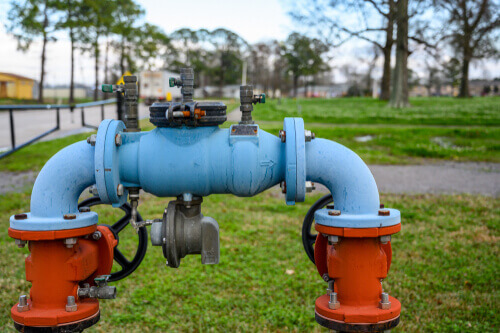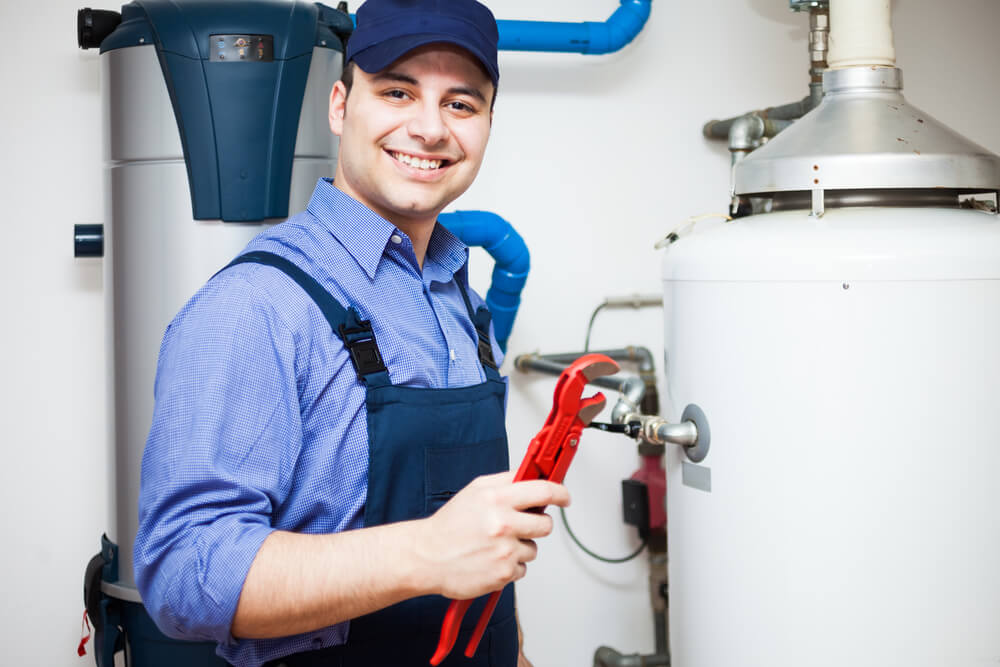Contamination of the drinking water supply can lead to health risks in stagnant water.
Backflow Preventer Testing
Backflow Preventer Testing
Keeping your plumbing system working properly and preventing water damage should be a top priority for all homeowners.
A backflow preventer is an important part of a plumbing system, allowing only clean and safe drinking water to flow in one direction – away from you and your family.
Regular testing of the backflow preventer can ensure it is functioning correctly and protecting you from potential contamination or other issues that could occur without its fire protection systems.

Do you want to protect your home from dirty water and harmful bacteria by having your backflow preventers tested regularly?
Blackmon Inc. is a plumbing services company specializing in backflow. We have the experience and expertise to ensure your home is safe from dirty water and harmful bacteria.
Keep your family safe with regular backflow testing from Blackmon Inc. We’ll make sure everything is in working order so you can rest easy knowing your home is protected against dirty water and harmful bacteria.
Schedule a free consultation today on our website!
In this post, we are going to discuss the importance of regular backflow testing as well as tips on how to make sure it continues to work efficiently.
What is backflow?
Backflow occurs when contaminated water enters a drinking water supply. It can cause illnesses and damage to infrastructure and is, therefore, a serious hazard. Backflow prevention devices are installed in many areas to ensure the water remains safe for consumption. A backflow preventer inspects and verifies the effectiveness of backflow prevention devices.
This testing is usually done annually, and it involves analyzing the operation of the device, assessing any potential risks, and ensuring that all parts are functioning correctly. The test results must be documented and have test reports to local authorities to maintain safe water standards.
Here are the dangers associated with not testing and maintaining backflow preventers:
Backflow testing is important to ensure the safety of the public and to avoid costly repairs. It is, therefore, essential that these devices are regularly inspected, tested, and maintained, following all applicable laws and regulations.
What are the environmental concerns in backflow?
Backflow preventers are an important part of keeping our water sources safe from contamination. When backflow testing is neglected, it can lead to serious environmental concerns, such as:
It is important to regularly test backflow preventers to ensure that they function properly and that our water sources are not contaminated, including the sprinkler system. Not only does this keep our environment safe, but it also helps to ensure public health and safety.
What are the Backflow Prevention Devices?
Backflow prevention devices are used to protect drinking water from contamination or pollution. The four common types of backflow prevention devices are:
These are the devices that Blackmon Inc. specializes in testing and certifying. Blackmon Inc. is a certified backflow prevention device testing company that ensures all devices are functioning according to the manufacturer’s specifications and are compliant with local plumbing codes.
Ways to protect your plumbing water supply With backflow prevention testing.
To ensure that your plumbing water supply is safe from contamination, it’s important to have your backflow preventers tested regularly. Backflow prevention testing is essential to maintaining the integrity of your plumbing system and keeping you and your family safe from any potential contaminants in the water supply.
Here are five ways to protect your plumbing water supply
with backflow prevention testing:
By following these five steps, you can ensure that your plumbing water supply is safe from contamination and that your backflow prevention devices are working properly. Backflow prevention testing is an essential part of keeping your plumbing system in top condition, so make sure to perform it regularly.

The Benefits of Preventing backflow
Backflow testing can help to protect your water supply from a variety of contaminants and pollutants.
These are just a few of the benefits of backflow preventer. By regularly conducting tests, you can ensure that your water supply is safe from contaminants and pollutants. Testing also helps identify potential problems or areas of improvement to save money in the long run.
Tell me the best tips to prevent backflow in public water systems and why you should have your backflow prevention device checked annually.
Here are five ways to protect your plumbing water supply
with backflow prevention testing:
Knowing these five tips will help to keep your public water system safe from contaminants and reduce the risk of contamination from backflow.

Final Thoughts
Blackmon Inc. plumbing services offer annual preventer testing for your home or business and commercial. Back low preventer testing is critical for preventing water contamination and protecting public health. Our technicians are certified to perform these tests, ensuring your system is up to code and running safely.
We strive to provide the best customer service possible in all of our services. We h pe this article has provided more information about the importance of backflow testing, what it is and how it works. If you have any questions, please don’t hesitate to reach out—we’re here to help! Thanks for rea ng, and we look forward to hearing from you soon!
Frequently Asked Questions About Backflow Preventer Testing
How do I know if my backflow preventer is working?
The best way to determine if your backflow preventer is working properly is to have it tested by an experienced professional. The testing backflow preventers must be performed by the standards set forth by local and state authorities. During the test, a trained technician will use specialized equipment to measure the pressure drop across the backflow preventer, inspect all components for signs of wear or damage, and check for any leaks.
What does a backflow test consist of?
A backflow preventer test typically involves testing the pressure drop across the device, checking for any leaks or signs of wear and tear, and verifying that all parts are working properly. The technician may inspect other components, such as valves and gauges, to ensure everything is functioning correctly.
Why test a backflow preventer?
Testing your backflow preventer is important for ensuring that the device is working properly and protecting your water system from contaminants. Regular testing helps to identify any issues with the device and allows for timely repairs, reducing the risk of contamination or other damage to your system.
